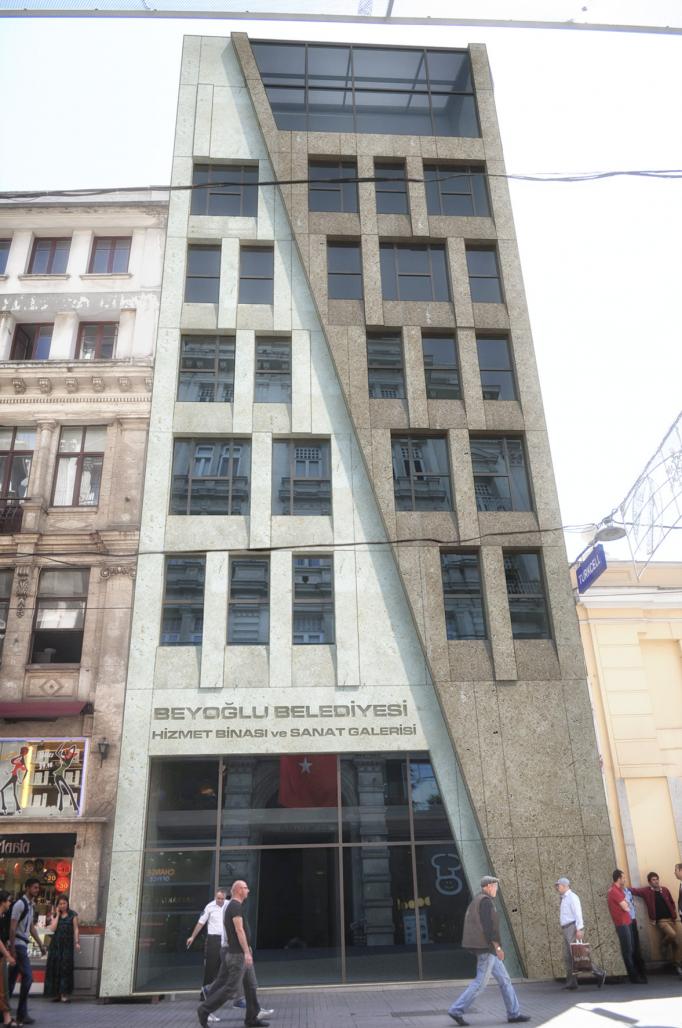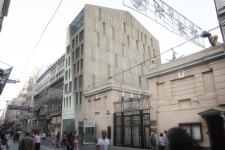The project was submitted to the invited competition opened by the Municipality of Beyoglu to replace their existing building on Istiklal Avenue.
1st basement and ground floor were planned as an art gallery, whereas each of the upper floors were solved as different units of the municipality. The roof floor was allocated to the mayor’s spaces.
Due to the strictly limited maximum building height and the demanding building program, only a few specific spaces could be solved as higher volumes.
The 1st basement floor belonging to the art gallery space was planned to have a 4,00m rough height, the maximum allowed by the zoning. Daylight was allowed into the basement via the skylights opened on the floor of the rear garden.
The 1st floor was set back from the front façade, in order to create an entrance with double-floor height. Similarily, a gallery void was opened on top of the meeting room on the top floor and it was covered with a transparent skylight as a continuation of the glazed façade.
Projections that are allowed were not used on the front façade due to the layout of the interior, as well as the concern to achieve harmony with the neighboring buildings. However, on the rear façace projections covered with transparent glazing were created, in order to allow the Bosphorus view and natural lighting into the building.
Fire escape stairs were solved as a steel structure outside the building due to the area limitation. It was positioned along the wall of the neighboring Santa Maria Church, in order to maximize the open space of the rear garden. Steel mesh slabs of the fire escape stairs were connected to the projections so that they function as balconies opening up to the Bosphorus view as well.
Natural stone was preferred as the façade cladding material, in order to blend with the existing architecture of the surrounding. Referring to the sculptural ornaments of the stone façades of Pera district, a three dimensional effect was created on the façade by applying recesses and projections to the stone cladding.
In addition to achieving a harmony with the context, the front façade was divided into two with a diagonal line spanning all along the façade vertically, in order to achieve a contemporary and striking façade. Two different stone patterns matching the neighboring buildings were used on those two parts.
The art gallery on the ground floor and the meeting room on the top were emphasized with large glass surfaces on the front façade. On the rest of the façades, the window openings of the neighboring buildings were continued with various widths and a random distribution.
On the side façade facing the Russian Consulate, the lines of the front façade was continued. Since it is forbidden to open windows, narrow slits were opened on the side façade according to the interior planning. By using semi transparent, insulated profilit glass panels in those slits, allowing daylight in during the day, whereas creating a random lighting effect at night was aimed. Additionally, the outstanding character of the façade was underlined by the light coming out of the narrow recess between the two layers of the frong façade at night.
Bronze color matching the stone colors was preferred for the aluminium joineries as well as the metal roof cladding.
2013
2013
3.149,3m² total building area. Reinforced concrete structure.
Ali Manço, Zuhtu Usta
Favorited 1 times








